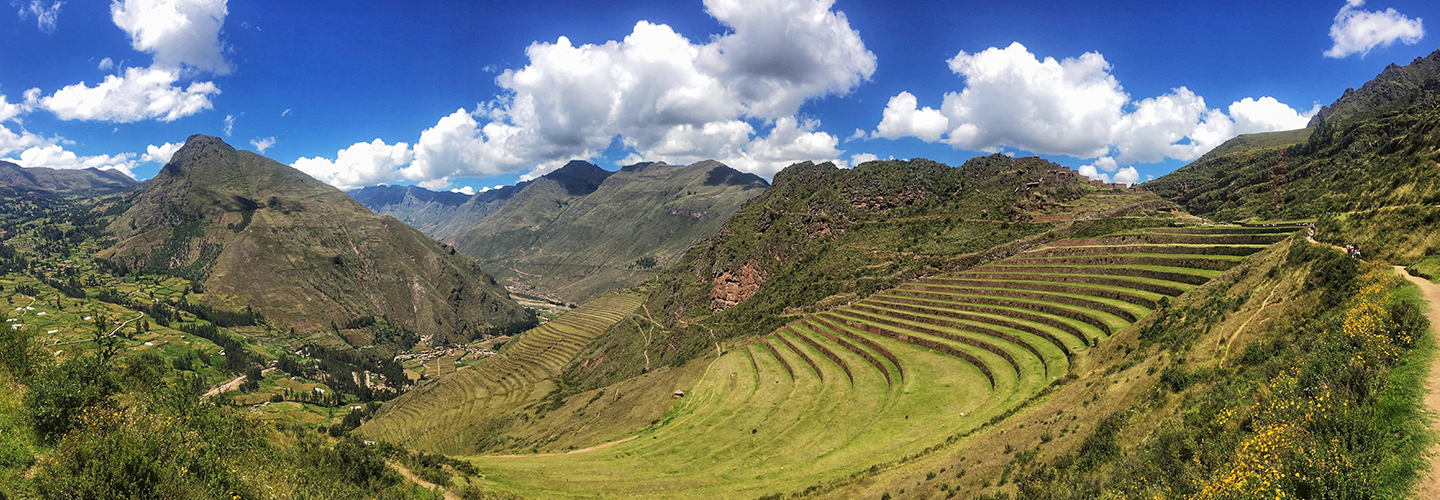
Get ready to explore one of the most iconic fortresses of the Inca culture. Discover the history thats hidden in the Ollantaytambo ruins at the heart of the Sacred Valley of the Incas.
Today in ruins, this fortress was rebuilt in 1440 by the Inca Pachacútec. It is located 80 kilometers northeast of Cusco and 40 kilometers from Machu Picchu. A citadel that is built of red granite that gives the impression of having been molded with melted and cut stones with absolute precision.
Nowadays, this fortress maintains a great mystery of how it was built since such edification was almost impossible to construct. Ollantaytambo was destroyed several times and reconstructed in different stages of the Andean culture. One of those cultures was the Incas, this tremendous empire found it and restored or transformed it but who was it really built by initially? It’s a question that until now has no answer.
To arrive at Ollantaytambo we can travel by Bus, taxis or also in Tours carried out by Agencies of Tourism from the city of the Cusco, Via Chinchero-Urubamba the distance is of 75 Km. For the highway that passes for Pisac the distance is of 93 Km.
You must take the buses on Puputi Street S/N in Cusco. The cars pass through the town of Pisac and arrive at Calca. The trip takes approximately 1 hour and 20 minutes. After Calca, you need to take a car to the town of Urubamba (30 minutes). Finally, you must board a bus from Urubamba to the town of Ollantaytambo (30 minutes).
You need to board the small buses on Pavitos Street in Cusco. These cars go to the Main Square of Ollantaytambo (with an intermediate stop in the town of Urubamba). The trip takes approximately 1 hour and 30 minutes. You can reach Ollantaytambo by train as well, however, the cost can be a bit high for most people. If you are in one of the towns in the Sacred Valley, you can take the buses to ‘Ollanta’.
To travel with a tourist agency you must acquire a transport service Cusco – Ollantaytambo. These services pick you up directly from your hotel/hostel to transport you without any stops to the train station itself. There are 2 types of service: shared (with other tourists who contracted the same service) or private (exclusive for a couple, group of friends, or family).
Note: The prices can be higher than doing it on your own. However, many tourists choose this service since it is safe and organized.
As in other archeological centers in Cusco, the only way to enter is by using the tourist ticket. You can purchase it in Cusco city or at the entrance of Ollantaytambo. The cost can vary as it comes as a package including other sites within the Sacred Valley of the Incas.
In Ollantaytambo is the train station from where most tourists leave in the direction of Machu Picchu. The train ride is about 2 hours (30.5 kilometers). The final stop is the Aguas Calientes town. From here, also called Machu Picchu town, the buses depart and in 30 minutes they ascend a steep mountain to the entrance door to the citadel (9 kilometers away).
Note: Train tickets are limited so it’s highly recommended to book them in advance. When traveling with a tour operator things get way easier as they set everything for your trip.
Thanks to its structure this fortress has been able to be maintained in good condition. Today, people can enjoy the streets of the Inca Era giving a sense of reconnection with the past. Even where the inhabitants live today you can see the Inca walls of the original houses. On one side of these small streets, you will be able to see Inca channels that currently supply the town with crystal clear water.
Among the main attractions we can find:
You can enjoy its streets, its landscapes, and its people. In its main square, you can observe the locals coming down from the nearby communities in colorful traditional costumes and hats adorned with multicolored flowers. Walking around the town will give you a very diverse scenario full of living cultures that you will never forget.
It is an impressive architectural complex almost completely destroyed. Thanks to the way it was built, it managed to repel treasure looters. It is thought that the whole set formed the Temple of the Sun, of which only the western wall has remained, formed by 6 red stones that fit with incredible accuracy.
The Royal House of the Sun or fortress still preserves the layout of the urban planning of the Incas. It is formed by 17 superimposed terraces, a succession of straight and wide platforms oriented towards the side of the square and the town.
Pincuylluna hill is located right in front of the Temple of the Sun. If you decide to climb the mountain, you will see stone block structures superimposed with the 6 famous windows called ‘colcas’ (Inca warehouses).